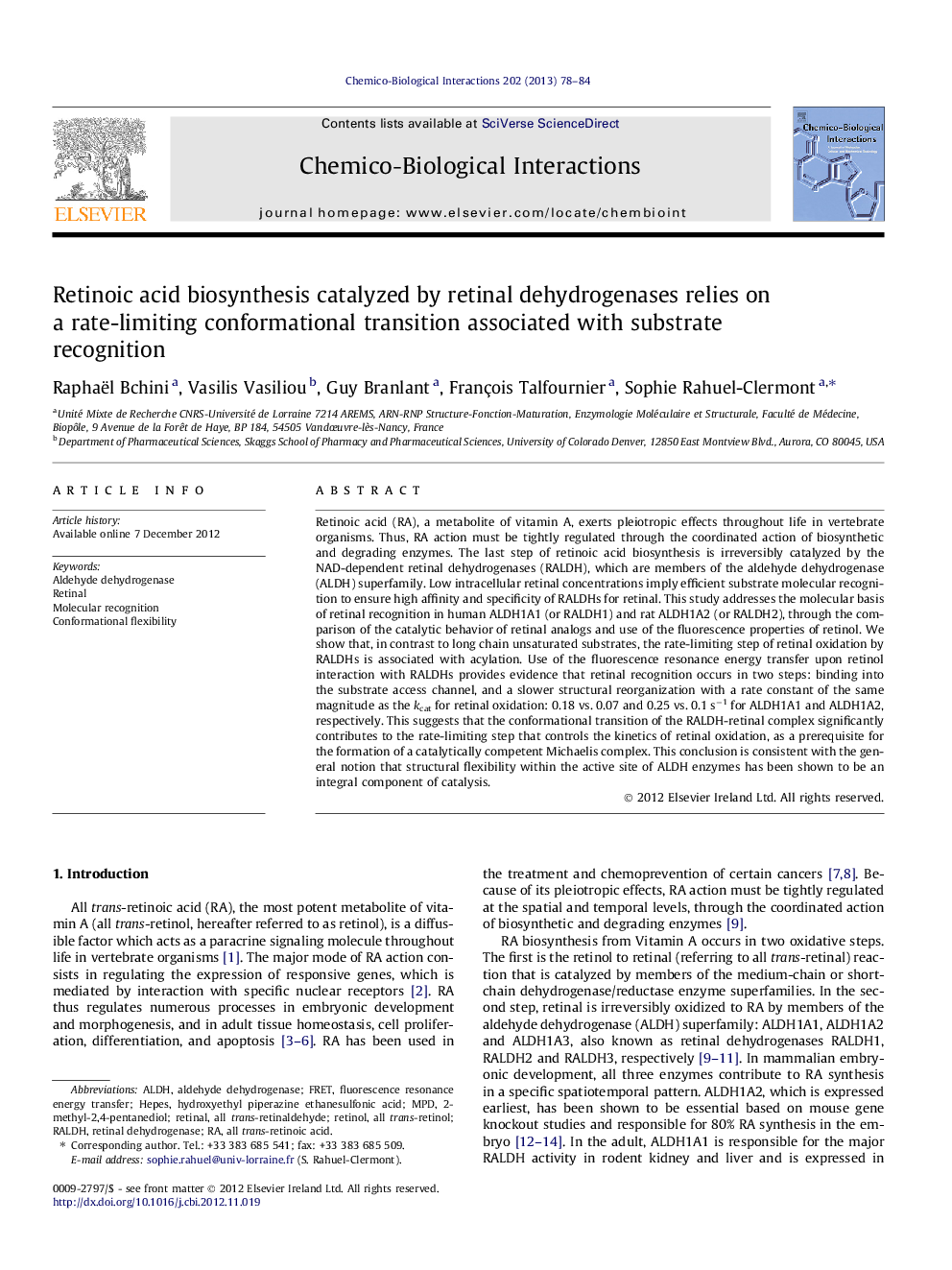| کد مقاله | کد نشریه | سال انتشار | مقاله انگلیسی | نسخه تمام متن |
|---|---|---|---|---|
| 2580642 | 1561635 | 2013 | 7 صفحه PDF | دانلود رایگان |

Retinoic acid (RA), a metabolite of vitamin A, exerts pleiotropic effects throughout life in vertebrate organisms. Thus, RA action must be tightly regulated through the coordinated action of biosynthetic and degrading enzymes. The last step of retinoic acid biosynthesis is irreversibly catalyzed by the NAD-dependent retinal dehydrogenases (RALDH), which are members of the aldehyde dehydrogenase (ALDH) superfamily. Low intracellular retinal concentrations imply efficient substrate molecular recognition to ensure high affinity and specificity of RALDHs for retinal. This study addresses the molecular basis of retinal recognition in human ALDH1A1 (or RALDH1) and rat ALDH1A2 (or RALDH2), through the comparison of the catalytic behavior of retinal analogs and use of the fluorescence properties of retinol. We show that, in contrast to long chain unsaturated substrates, the rate-limiting step of retinal oxidation by RALDHs is associated with acylation. Use of the fluorescence resonance energy transfer upon retinol interaction with RALDHs provides evidence that retinal recognition occurs in two steps: binding into the substrate access channel, and a slower structural reorganization with a rate constant of the same magnitude as the kcat for retinal oxidation: 0.18 vs. 0.07 and 0.25 vs. 0.1 s−1 for ALDH1A1 and ALDH1A2, respectively. This suggests that the conformational transition of the RALDH-retinal complex significantly contributes to the rate-limiting step that controls the kinetics of retinal oxidation, as a prerequisite for the formation of a catalytically competent Michaelis complex. This conclusion is consistent with the general notion that structural flexibility within the active site of ALDH enzymes has been shown to be an integral component of catalysis.
► Retinal dehydrogenase catalytic mechanism is explored by presteady-state kinetics.
► The rate-limiting step of retinal dehydrogenases depends on the nature of substrate.
► Retinol fluorescence properties reveal retinoid binding and recognition mechanism.
► Substrate specificity of retinal dehydrogenases relies on conformational transition.
Journal: Chemico-Biological Interactions - Volume 202, Issues 1–3, 25 February 2013, Pages 78–84